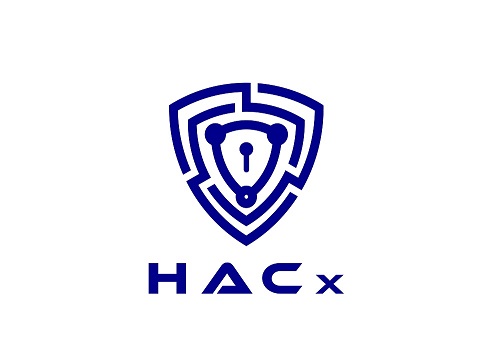Hardware cyber security focuses on protecting the physical components of computer systems, devices, and networks from unauthorized access, attacks, and tampering. It plays a crucial role in ensuring the overall security of information technology systems.
Hardware cyber security often receives less attention and funding compared to other areas like network and endpoint cybersecurity. This oversight creates a blind spot that malicious actors exploit, leaving enterprises vulnerable to hardware based attacks.
Sepio’s platform aims to address this vulnerability by providing an objective assessment of an enterprise’s hardware cyber security posture. Let’s explore how Sepio enhances hardware cyber security awareness and improves the overall security posture.
Hardware Cyber Security Assessment with Sepio
Sepio combines 7 aggregated indicators, 29 sub-indicators, and 148 micro-indicators to evaluate the external and internal threat landscape. By leveraging primary and secondary data sources, Sepio delivers a detailed scorecard, presenting an objective assessment of the enterprise’s hardware cybersecurity posture. This comprehensive assessment enhances situational awareness and offers valuable risk insights to guide necessary adjustments.
Sepio brings clarity to hardware cyber security risks and improves awareness among companies. Often, the absence of available cyber security solutions results in unnoticed vulnerabilities, creating a false sense of security. Sepio’s platform highlights the importance of hardware cybersecurity across the entire enterprise, ensuring hardware risks are properly addressed when implementing policies and technologies.
Additionally, Sepio guides enterprises toward a stronger security posture through a comprehensive assessment covering various topics. The assessment is complemented by peer comparisons, allowing organizations to benchmark their hardware security posture and make informed adjustments to mitigate risks and improve overall security.
Enterprises are getting better at defending themselves against traditional cyberattacks. However, as the hardware security domain remains neglected, bad actors find great value in covert hardware attacks, so much so that USB-borne threats have increased by 37%. Rogue Devices (USB HID-emulating devices or physical layer network implants) allow cybercriminals to evade detection by operating under the radar of existing security solutions, such as NAC, EPS, IDS, or IoT network security.
Get your free copy to learn more about hardware related risks and their impact.
Sepio Hardware Cyber Security
As the cyber security market grows, Sepio aims to assist both insurers and insured enterprises. By providing insights into hardware cyber security posture, Sepio helps lower cyber insurance premiums for enterprises, reducing the overall risk. It also offers valuable risk information for insurers to assess the insured’s risk posture more accurately, resulting in the generation of suitable policies.
Sepio’s platform stands out in the field of hardware security by leading a comprehensive hardware security audit for an organization’s entire hardware ecosystem.
Sepio platform provides enterprises with an overall score ranging from 10 to 100. Where 10 represents a high-risk hardware security posture, and 100 represents a low-risk hardware security posture. Each indicator also receives a score, offering a granular breakdown of the assessment. Score changes are presented using arrows showing improvement or decline, accompanied by numerical value changes for both the overall score and individual indicators.
Physical Layer of the OSI Model
Unlike traditional methods that focus on scanning peripheral connections, Sepio goes further by examining the intrinsic Hardware Bill of Material (HBOM) components. This involves spotting the physical profile of each hardware device during its connection at the physical layer. Allowing Sepio to discover and profile all peripheral devices. This capability extends to identifying and detecting potentially malicious USB devices (Bad USB), even those embedded within legitimate USB devices.
Sepio’s Asset DNA technology, grounded in the physical layer, prioritizes device existence over behavior, effectively detecting all managed, unmanaged, and concealed devices. Utilizing innovative methods and machine learning algorithms, Sepio discerns the authentic origin of asset risk, avoiding the distortions of misleading profile perceptions and behavioral assumptions.
The Sepio platform ranks assets according to their risk levels and implements precise hardware access controls. It automatically obstructs devices breaching settled rules or recognized as known attack tools.
See Every Known and Shadow Asset. Prioritize and Mitigate Risks
Having comprehensive visibility into all network assets is a crucial prerequisite for effective hardware defense. However, the value of this knowledge lies in its practical application.
Sepio’s Hardware Cyber Security enables you to promptly discern which network devices require attention. Leveraging Asset DNA technology and policy rules, it provides alerts for high, medium, and low risks, expediting time to resolution, identifying regulatory gaps, and foiling hardware attacks.
The real-time actionable visibility offered by Sepio enables your security team to gain a deeper understanding of your device attack surface and proactively manage hardware defense.
Gain a comprehensive understanding of your enterprise’s hardware cyber security posture with Sepio assessment. Uncover weaknesses, make informed adjustments, and improve your overall security posture. Explore the power of Sepio and the valuable risk insights it provides for improved hardware security.
Talk to an expert. It will help you understand how to use Sepio’s patented technology to gain control of your asset risks.


